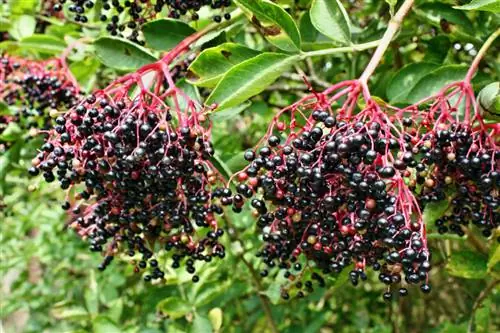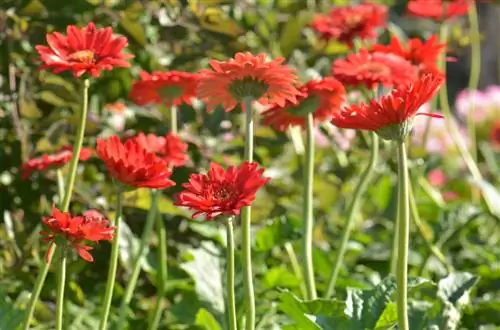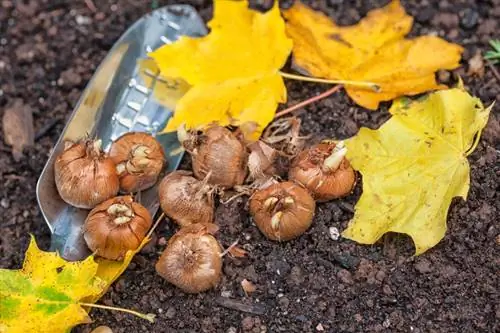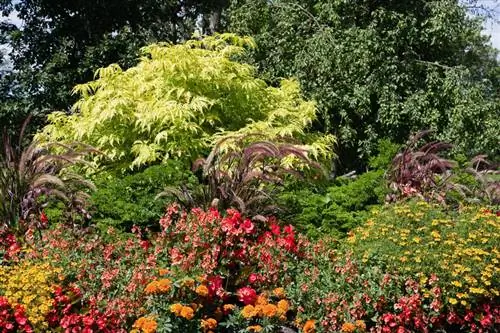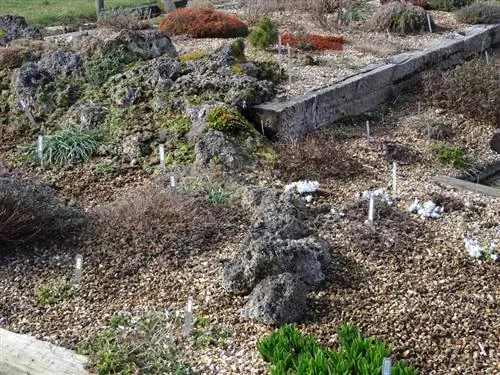- Author admin [email protected].
- Public 2023-12-16 16:46.
- Last modified 2025-01-23 11:20.
Elderberry Sambucus nigra is making a brilliant comeback in the home garden. The traditional wild fruit tree has fought its way back into our consciousness thanks to its wonderful flowers and rich elderberries. You can find out how to properly plant and care for black elderberry here.

What location does the black elderberry need?
The black elderberry (Sambucus nigra) prefers a location with a sunny location to light shade, nutrient-rich, humus-rich soil that is airy and permeable as well as fresh and moist. It is tolerant of moderate lime content.
The preferred location
As a native tree, elder Sambucus nigra is perfectly adapted to the regional climate and soil conditions. Black elderberry is therefore one of the most common types of shrubs. It develops its optimum under the following site conditions:
- a sunny location with light shade
- nutritious soil, rich in valuable humus
- like airy and permeable
- preferably not too dry, but fresh and moist
- tolerant to moderate lime content
It's planting time twice a year
Flexibility is a crucial characteristic of elderberry Sambucus nigra. This also applies to choosing the appropriate planting date. In autumn, the tree quickly extends its roots into the sun-warmed soil and has established itself well in time for winter. If you miss this time, plant black elderberry in early spring from March/April.
Step-by-step instructions for planting correctly
Before the actual planting begins, place the root balls in a container with water. Here they should be soaked until no more air bubbles appear. Meanwhile, the following work is taking place at the selected location:
- weed the soil meticulously and clean it of roots or stones
- loose the soil 1-2 spades deep
- enrich the bed soil with sifted compost (€41.00 on Amazon) and horn shavings
- create a planting pit with twice the volume of the root ball
- insert the potted elderberry Sambucus nigra as deep as it was previously
- fill the planting hole with soil, tamp it down and water it
If you plan to plant several specimens, plant one Sambucus nigra elderberry per meter. Since it is a shallow-rooted plant, its large-scale spread requires sufficient distance from masonry and paved surfaces. In this regard, a distance of 200-300 centimeters is recommended.
Watering and fertilizing in a balanced way
It is obvious that an impressive elder Sambucus nigra is no starvation artist. In order to produce the enormous biomass, a sufficient amount of energy is required. This goes hand in hand with an adequate water supply, because the wood sometimes reacts quite badly to drought. How to water and fertilize in the right amount:
- If there is no rain, elderberry Sambucus nigra is watered regularly
- apply the water directly onto the tree disc and not over flowers and leaves
- fertilize every 3-4 weeks from March with 3-4 liters of compost per square meter
- Additional horn shavings and primary rock powder
- Alternatively, apply a mineral long-term fertilizer in March and June
From August onwards, an elder Sambucus nigra no longer receives any fertilizer, as branches that sprout now will no longer mature before winter. They would freeze and significantly weaken the plant's resistance. It is important to remember to water the shrub on frost-free days in winter. If there is no snow, the black elderberry is at risk of considerable drought stress.
Cut planned
An elder Sambucus nigra will show acceptable growth even without regular pruning. With strategically clever pruning, experienced hobby gardeners can create a spectacular silhouette, combined with magnificent flowers and a lush berry harvest. Therefore, take a little time for the following protocol of skilful shaping and maintenance pruning:
- The ideal time for cutting is the months after the harvest from November to March
- cut harvested shoots completely or shorten them by two thirds
- cut off dried, stunted or diseased branches at the base
- If possible, do not cut young shoots with buds for the next season
- shorten too long, thin rods to just above a sleeping eye
An elder Sambucus nigra receives its first cut in the second year after planting so that it can initially develop its natural habit. Then you are free to train the tree into a standard tree. This measure is primarily interesting for small gardens. To do this, select a strong shoot from the main trunk and consistently remove all side shoots up to the desired crown height.
Beautiful varieties
Do you always associate elderberry Sambucus nigra with its creamy white flowers and violet-black fruits? Then get to know the decorative varieties to add even more variety to the garden. The cultivar 'Black Beauty' impresses with pink flowers and dramatic brown-red leaves. The elder Sambucus nigra var. albida is a fascinating rarity with delicious, yellow-green berries.
Tips & Tricks
With every pruning you have plenty of material for propagation in your hands. In winter, elderberry Sambucus nigra can easily be bred using cuttings. Cut to a length of 15-20 centimeters, place three quarters of the woody offshoots in a pot with peat sand. Watering is only carried out when the first shoots appear.

